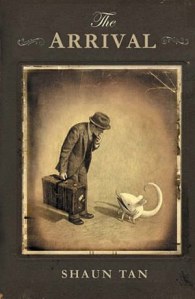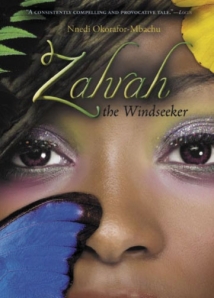 In looking at international YA in the library, one of issues that I keep coming back to is how hard it is to categorize and define the ‘international’ in international young adult literature.
In looking at international YA in the library, one of issues that I keep coming back to is how hard it is to categorize and define the ‘international’ in international young adult literature.
Does ‘international’ mean works published abroad? Works published domestically by ‘international’ authors? Works published about international topics? Or does it refer to works that also might be called ‘multicultural’?
Generally speaking, here in Canada and in the US, I have noticed four broad types of books considered ‘international’ in various booklists, awards and library resources.* Categories 1 and 2 tend to be the most popular in US and Canadian libraries – and they are the books published domestically, in English. Categories 3 and 4, by contrast – those books published abroad (i.e. outside of Canada or the US) – tend to be more difficult to find in US or Canadian libraries, and they tend to be the type of books not normally labeled ‘international’ like manga, fantasy, humor or general YA literature.
But, to break it down further, here are the 4 categories of books labeled ‘international’ that I have found thus far in my research:
1. Books written and published in Canada/US for a domestic audience by ‘international’ authors originally from different countries writing about their home countries such as:
- Ting-xing Ye‘s autobiographical tale of life during the Cultural Revolution in China, My Name is Number Four, or her fictional work detailing the lives of young female migrant workers in China, Mountain Girl River Girl
- Emmanuel Jah’s autobiographical story of life as child soldier in Southern Sudan, War Child; or Ishmael Beah’s memoir of his similar story as a child soldier in Sierra Leone, A Long Way Gone
2. Books written and published in Canada/US for a domestic audience about an international topic set abroad such as:
- Chanda’s Secrets and Chanda’s Wars – two fictional, though realistic, stories written by Canadian author, Allan Stratton, which focus on the issues of AIDS and mass violence in sub-Saharan Africa
- Journalist’s Joe Sacco’s graphic novel, Palestine, which details his interviews in the West Bank and Gaza Strip in the early 1990s or Guy Delisle’s graphic account of time spent in Burma, The Burma Chronicles
- Audience — written for the domestic Canadian/American audience
3. Books originally written/published abroad for an international audience and published in translation in the Canada/US such as:
4. Books originally written and published abroad in English for an international audience and then distributed in Canada/US such as:
- Melina Marchetta’s absorbing novel of YA suspense and family secrets, Jellicoe Road, from Australia – winner of the 2009 Printz Award for excellence in YA literature or Shaun Tan‘s multiple YA picture books (like The Red Tree) also from Australia
- Louise Rennison’s multiple Confessions of Georgia Nicolson books from the UK, all related in a confessional diary style à la Adrian Mole
The difficulty with these categories and the multiplicity of definitions for ‘international’ can, I think, be attributed to issues of accessibility, cost and collections.
Books from categories 3 and 4 are much more difficult to find – note that even the books I have mentioned in the categories above are from Australia, Europe and Japan, even though YA titles are published worldwide and many countries/regions like India and East Africa often publish in English.
Cost is certainly also part of this equation. To translate an international book or find a domestic distributor/publisher for one demands time and funds and in order to ensure a profitable return on this investment, it often seems that only those that are the best of the best and/or the most popular globally – like Moribito or Cornelia Funke’s novels – get translated into English. The issue with this being that these books represent only a fraction of what is published internationally.
Moribito, for example, was originally published in Japan in the mid-1990s, has 10 books in its series, and has spawned various manga and anime incarnations. When it was translated and published in English in 2008 by Arthur A. Levine Books (an imprint of Scholastic Inc.) Moribito was already a successful book with a dedicated audience.
There also seems to be significant conflation of the terms, ‘international’ and ‘multicultural’ in many collections – labeling that can create library collections that may seem ‘international’ on the surface, but that may lack any books from categories 3 and 4.
The concern I have with the popularity of categories 1 and 2 in library catalogues is the question of representation. As you can see from most of the titles, especially in categories 1 and 2 (which are the most represented in libraries currently), there is a definite pedagogical and didactic bent to most ‘international’ works – many are about war, struggles with oppression, poverty, etc. The over-representation of these types of works in a collection that is supposed to be diverse can reinforce, not expand, a decidedly Western worldview – which is not the purpose of international YA as most would describe it.
In Against Borders: Promoting Books for a Multicultural World (1993), Hazel Rochman wrote that the “stories you read can transform you because they help you imagine beyond yourself. If you read only what mirrors your view of yourself, you get locked in…buried.” (pp. 11) Rochman further added that “reading makes immigrants of us all – it takes us away from home, but, most important, it finds homes for us everywhere” (pp. 15).
My primary concern here is that some of the ways in which we discuss or define the ‘international’ in young adult literature today is limiting this potential.
____________________________________________
*Books NOT Borders note: for the purpose of my research and this blog I am looking at the US and Canada as my ‘domestic’ market, and everything written or published outside Canada and the US as ‘international.’ While there are distinct differences between the two countries, generally speaking—in librarianship—there are significant similarities and overlap particularly in the use of ALA materials (especially YALSA) north of the border in Canada, and in the abundance of American literature in Canadian libraries.
Read Full Post »
 Arrival, The (GN)
Arrival, The (GN) Named after Africa’s first Nobel Laureate, the
Named after Africa’s first Nobel Laureate, the 

 In looking at international YA in the library, one of issues that I keep coming back to is how hard it is to categorize and define the ‘international’ in international young adult literature.
In looking at international YA in the library, one of issues that I keep coming back to is how hard it is to categorize and define the ‘international’ in international young adult literature.![IGFenceBarbwire[2] IGFenceBarbwire[2]](https://booksnotborders.files.wordpress.com/2009/05/igfencebarbwire21.jpg?w=300&h=187)